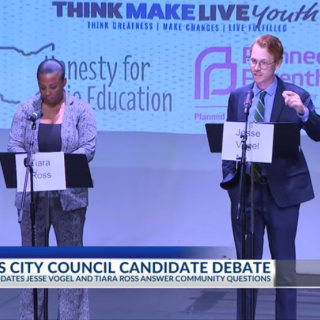The Trump administration is engineering the most extensive dismantling of the federal workforce in modern history—not through mass firings, but by incentivizing resignations. A new Office of Personnel Management (OPM) program offers federal employees full pay and benefits until September 30, 2025, while exempting them from in-person work. This isn’t just an incentive—it’s a slow-motion purge designed to drain the government of talent without triggering the backlash of forced layoffs.
Many will take this deal, viewing it as a lucrative early retirement with no strings attached. The most likely to leave? The most experienced, skilled employees—the backbone of the federal government. These are the workers with institutional knowledge, those best positioned to find opportunities elsewhere.
For now, the damage will be masked. These employees will technically remain on payroll, but they’ll be ghost workers—paid but absent. This illusion of stability will persist until October 2025, when their exits become official and the full impact takes hold.
Agencies will be gutted. Essential services will slow to a crawl. Social Security and Medicare, which rely on specialists to process complex claims, will face massive backlogs. Retirement benefits, disability claims, and healthcare subsidies will take months instead of weeks, leaving millions of vulnerable Americans in limbo.
National security will suffer. Intelligence analysts and cybersecurity experts will leave, weakening threat detection. Cyberattacks will become harder to prevent, terrorism investigations slower. The U.S. will face growing risks as adversaries exploit these new vulnerabilities.
Federal law enforcement will be severely weakened. The FBI, DEA, and ATF rely on experienced investigators for complex cases. If enough leave, prosecutions of organized crime, drug trafficking, and corruption will stall. Criminals who should have been convicted may go free because there aren’t enough agents to finish the job.
Businesses will also feel the impact. A gutted federal workforce means inconsistent regulatory guidance, slower approvals, and stalled permitting. Infrastructure projects will be delayed, hurting economic growth. Financial markets will become volatile as oversight agencies struggle to enforce compliance, leaving investors uncertain. A weaker government won’t reduce bureaucracy—it will make it chaotic and unpredictable.
When these failures start piling up, the government will try to hire replacements. But who will take these jobs? The reputation of federal employment will be in ruins. Hiring will be slow, attracting mostly underqualified applicants who take the job as a last resort. The expertise lost in 2025 will take decades to rebuild—if it ever returns.
Taxpayers will pay twice. First, they’ll fund salaries for employees who are essentially on paid leave. Then they’ll pay again for the inefficiencies, delays, and mistakes that follow. They will pay for a government that no longer functions properly.
This isn’t about cutting costs or increasing efficiency. It’s a deliberate attempt to cripple federal capacity while pretending to offer workers a choice. But that choice is an illusion. It’s an exit strategy designed to shrink government quietly, without the fallout of direct layoffs.
By the time the true damage is visible, it will be too late. The institutions that collapse in 2025 won’t recover quickly. This isn’t a temporary disruption—it’s a permanent dismantling of governmental functions built over generations.
The administration will claim success, pointing to lower payroll costs and a “leaner” government. But what they won’t say is that services will be weaker, slower, and less effective. That when disaster strikes, the response will be inadequate. That when people need help, they will face endless delays and confusion.
This is a slow-motion collapse, a train wreck happening in real time. Those who see it coming are leaving. Those who remain will struggle to hold the system together. And the American public—taxpayers, businesses, the elderly, the sick, the vulnerable—will be left paying the price.
---
Gleb Tsipursky, PhD, serves as the CEO of the hybrid work consultancy Disaster Avoidance Experts and authored the best-seller Returning to the Office and Leading Hybrid and Remote Teams.



